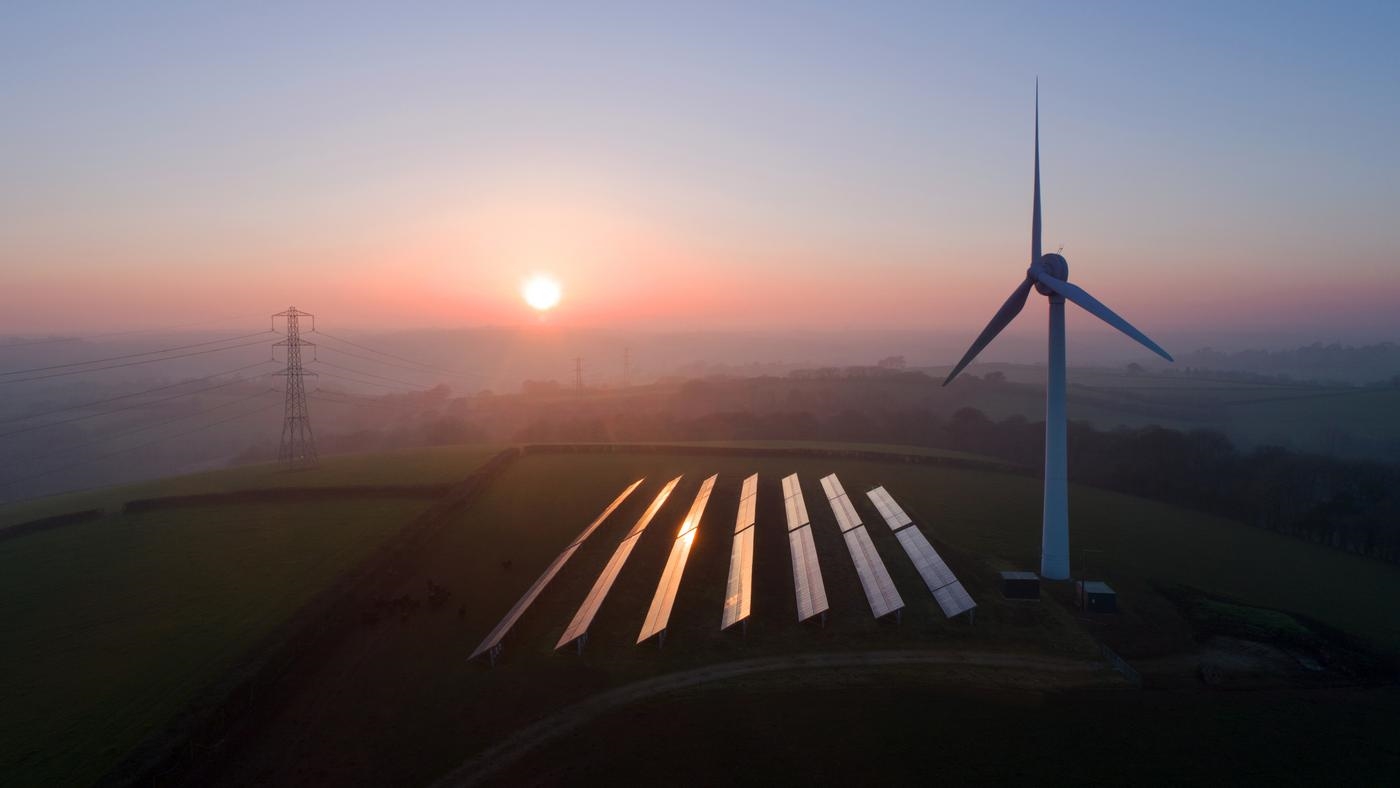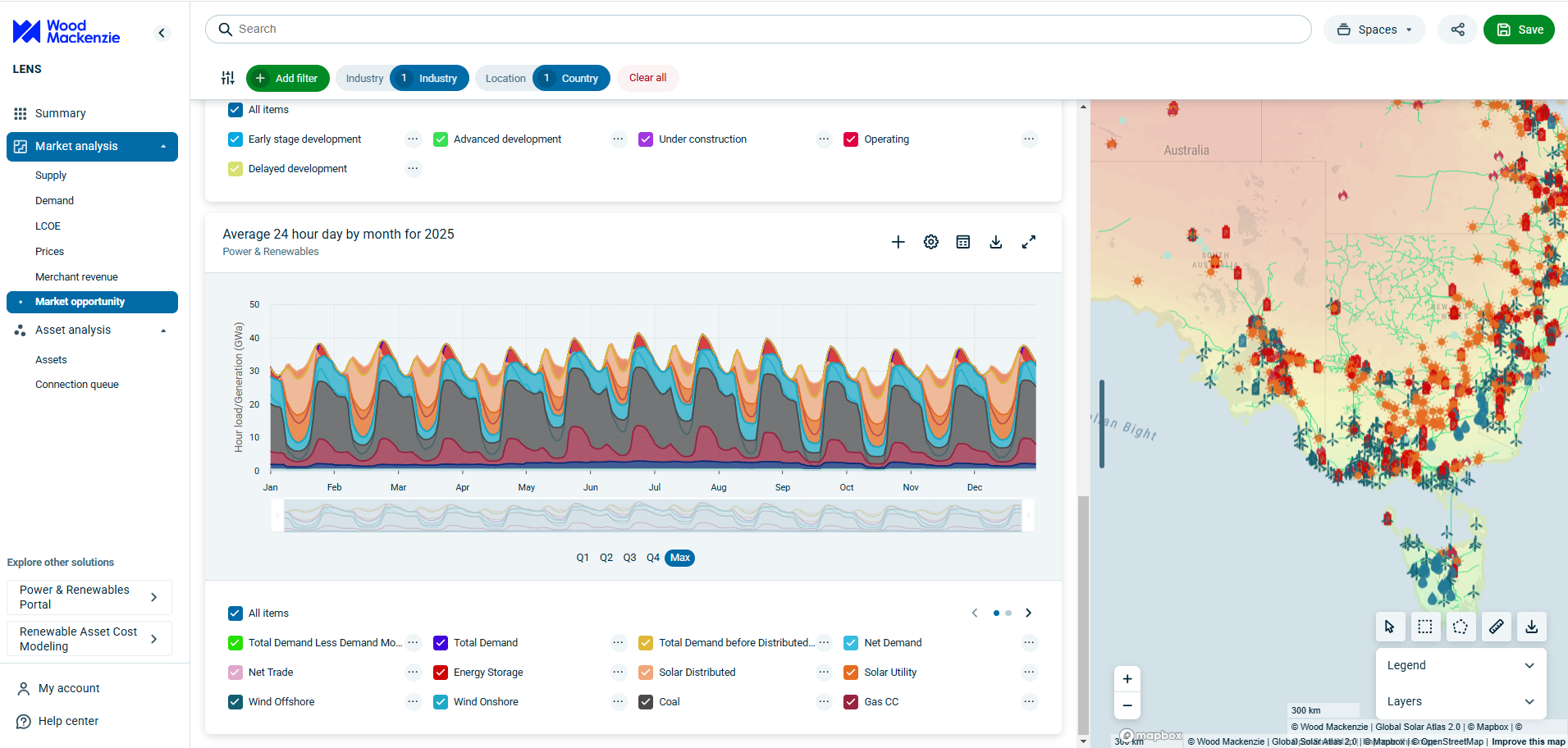Get Ed Crooks' Energy Pulse in your inbox every week
Can energy close US trade gaps?
Buoyant US oil and gas exports can only be a partial solution to the deficits targeted by the Trump administration
8 minute read
Ed Crooks
Vice Chair Americas and host of Energy Gang podcast

Ed Crooks
Vice Chair Americas and host of Energy Gang podcast
Ed examines the forces shaping the energy industry globally.
Latest articles by Ed
-
Opinion
Keeping cleantech investment alive
-
Opinion
Can energy close US trade gaps?
-
Opinion
Tariff shockwaves shake the energy industry
-
Opinion
How can the power industry meet the challenge of rising demand?
-
Opinion
Is the US being left behind in the race to develop new clean energy technologies?
-
Opinion
US E&Ps look for international growth
“Sometimes it pays to be a little wild.” That advice from President Donald Trump, given in his 1987 book ‘The Art of the Deal’, gives an insight into his decisions on tariffs over the past two weeks.
The announcement on 2 April of steep new tariffs on US imports shocked the world and roiled financial markets. Officials in the Trump administration say the dramatic impact of that announcement was part of a negotiating strategy, aimed at bringing other countries to the table to agree new trade deals with the US.
Kevin Hassett, director of the National Economic Council, said over the weekend that 130 countries had responded to the president’s announcement by entering negotiations with the US. Administration officials say they will be working intensively to agree new trade deals, with President Trump personally handling negotiations with the 10 or 15 most important countries.
Energy will play a key role in those negotiations. It is something that the US has, and that many other countries want.
President Trump last week highlighted the potential for oil and gas to reduce the EU’s bilateral trade surplus with the US. "One of the ways that that can disappear easily and quickly is they're going to have to buy our energy from us,” he said. “They can buy it, we can knock off $350 billion in one week.”
The US is already an important energy supplier to the world: the largest producer of both oil and gas, the largest exporter of LNG, and one of the largest exporters of crude oil and petroleum products.
Crude oil was the largest US export last year, worth more than three times as much as commercial aircraft, and more than four times as much as soya beans.
Sales of US oil and gas are important in some of the countries that are a key focus for the Trump administration, because they are running the largest bilateral trade surpluses. Oil and gas last year represented 15% of total US exports to Japan, 21% of exports to the EU, 28% of exports to South Korea, and 30% of exports to India.
So it is an obvious step for the administration to look to increased oil and gas exports as a key mechanism for reducing those trade gaps. US oil production is still on a rising trend – although crude price weakness could delay that growth – and US LNG exports will be boosted by a new wave of projects that are expected to take final investment decisions (FID) over the next few years.
US tariff policy remains volatile. An executive order last week temporarily suspended the full implementation of the new tariffs on countries other than China for 90 days. During that period, they will face 10% across-the-board tariffs, instead of the rates of up to 50% announced on 2 April.
Administration officials have said that countries that fail to agree acceptable trade deals, on terms more favourable to the US, will face those higher tariffs. That creates strong incentives for all those countries to commit to increased purchases of US oil and gas where they can.
The Wood Mackenzie view
Although there is scope for many countries around the world to buy more oil and gas from the US, increased energy exports cannot on their own transform the bilateral trade balances that are the focus for the Trump administration.
There are two reasons for that. First, the mechanics are challenging. Countries will need to make commitments to buy more US oil and gas to show that they are not just offering empty promises. In the oil market, refiners and fuel suppliers will generally not want to make those long-term commitments.
In LNG, buyers do often sign long-term contracts. But physical flows will not always follow those contracts. Japanese buyers have 10 million tons per year of contracts for LNG already, but the country imported only 6 million tons last year, says Giles Farrer, the head of Wood Mackenzie’s LNG and gas asset research team.
The second problem is that for both gas and oil, the size of the potential increases in US exports is inadequate.
Take the EU as an example. If the EU imported all of its diesel from the US, rather than the 10%-20% it does now, that might increase annual purchases of US fuel by roughly US$15-20 billion.
If the EU bought all its imported light crude from the US, that could increase its purchases from about 1.6 million barrels per day to about 3.6 million b/d. At today’s prices, that increase would be worth roughly US$50 billion a year.
The picture for gas is similar. If the EU imported all its LNG from the US this year, on Wood Mackenzie’s forecasts, that would be worth about an additional US$25-35 billion.
Putting it all together, that means that at an absolute maximum, under some extreme assumptions, additional EU oil and gas imports from the US could reach about US$100bn. That is less than half the US bilateral trade deficit with the EU, which was US$224 billion last year.
As Alan Gelder, Wood Mackenzie’s senior vice president for refining, chemicals and oil markets, puts it: “It’s useful, but simply not enough.”
The pressure to negotiate on trade may help expedite oil and gas purchases from the US. In the past week, NextDecade has announced two agreements to buy gas from Train 4 at its Rio Grande LNG plant in Texas: one with Aramco and one with TotalEnergies.
But although these deals may be signals of support for US exports, the gas will go into the buyers’ portfolios, and could end up in markets anywhere around the world.
To close the bilateral trade gaps that the Trump administration cares about, countries will have to engage in more difficult negotiations with the US over other industries apart from energy.
In brief
President Trump has launched a plan to support the US coal power industry. The president signed an executive order mandating the energy secretary to “streamline, systemize, and expedite” processes for requiring specific power plants to run, and for preventing plants from shutting down. The order does not mention coal specifically, but argues that “our electric grid must utilize all available power generation resources, particularly those secure, redundant fuel supplies that are capable of extended operations.”
A similar proposal in President Trump’s first term was dropped after widespread opposition in the industry, including objections that the plan would raise electricity prices for consumers. Coal-fired plants provided about 16% of US electricity last year, down from 46% in 2010.
Four Republican senators have written to the leader of their party in the Senate, supporting energy tax credits that were included in the Inflation Reduction Act of 2022. In the letter to Senate Majority Leader John Thune, the senators argue that repealing the credits wholesale, or ending individual credits, would create uncertainty and threaten investment and job creation.
The senators, including Lisa Murkowski of Alaska and John Curtis of Utah, say they want tax reforms to improve efficiency and fiscal sustainability, “without undercutting current and future private-sector investments that are vital to domestic manufacturing, energy innovation, and affordability for American families.” Republicans in Congress are negotiating the details of a budget package with the aim of agreeing cuts in taxes and government spending.
The US Department of Energy has announced that when it supports academic research it will limit payments for indirect costs to 15% of project costs. The department said the indirect costs, used to cover spending on facilities and administration, had been averaging more than 30% of project costs in grants paid to researchers at colleges and universities. The move is expected to save US$405 million a year from the department’s grant programme of more than US$2.5 billion a year distributed to colleges and universities.
Other views
Tariffs: implications for the oil and gas sector – Simon Flowers
Gas and LNG in 2025: a commodity trader’s guide – Lucas Schmitt
Oil and refined products in 2025: a commodity trader’s guide – Alan Gelder and Jim Mitchell
Navigating India’s evolving power market: capitalising on the renewable revolution – Rashika Gupta
North Sea row highlights wind farms’ growing ‘wake effect’ problem – Rachel Millard
The power industry must oppose Trump’s coal bailout ... again – Ari Peskoe
Quote of the week
“Under President Trump’s leadership in the next four years, we’ll almost certainly see lower average energy prices than we saw in the last four years of the previous administration.”
Speaking to reporters in Riyadh, Chris Wright, US energy secretary, underlined the Trump administration’s commitment to cutting energy costs for consumers. He has been on an official tour of the Gulf region, visiting Saudi Arabia, the United Arab Emirates, and Qatar.
West Texas Intermediate crude averaged about US$79 a barrel during the Biden administration. It stood at about US$61.50 a barrel last weekend.
Chart of the week
President Donald Trump’s opposition to wind power has raised concerns about the outlook for the industry in the US, but installations had slowed already last year, to their lowest level in 10 years. The latest US Wind Energy Monitor, from Wood Mackenzie and American Clean Power, shows that 5.2 gigawatts of wind generation capacity were installed in the US last year, down from 7 GW in 2023. However, the industry is expected to bounce back this year.
Take a look at the full report for much more detail.
Get The Inside Track
Ed Crooks’ Energy Pulse is featured in our weekly newsletter, alongside more news and views from our global energy and natural resources experts. Sign up today via the form at the top of the page to ensure you don’t miss a thing.







